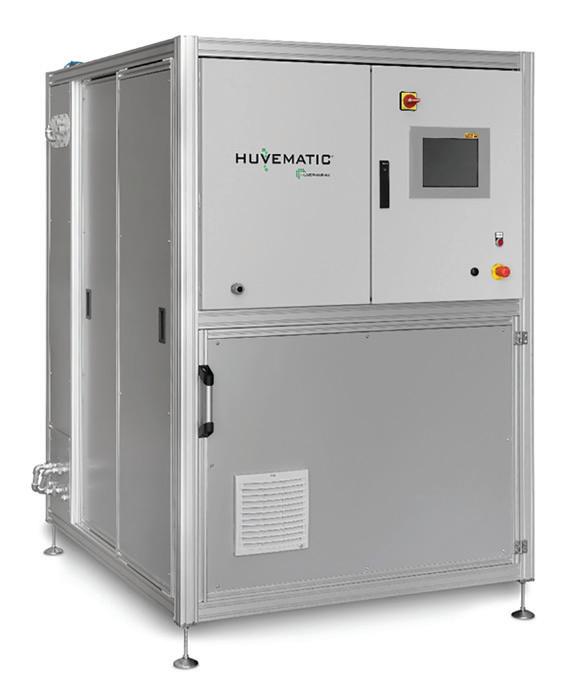
2 minute read
The revolution of on-site liquid enzyme production in aquafeed
Heat processing of feed, including pelleting and extrusion, has been a practice in the feed industry for decades. To overcome the degradation of heatsensitive additives, adding enzymes as liquids via post pelleting systems (PPLA) avoids the loss of enzyme activity. These liquid enzymes are produced in water, adding stabilizing substances and delivered in IBCs to the feed mill. However, using liquid enzymes poses challenges. In particular, in summer conditions and in tropical regions where aquaculture production is diverse, the stability of these liquid enzymes may be compromised, in particular the requirement for temperature-controlled transport and storage.
Instant water-soluble enzyme powders
The basic thought of this concept is quite simple: Why not produce liquid enzymes in the feed mill itself? This was the question that led to the development of the Huvematic Concept by Huvepharma. This concept has two elements: the development of water-soluble enzyme powders (WSP) and the development of a tool to automatically produce liquid enzymes on-demand at the feed mill.
Huvepharma’s know-how on the production and processing of enzymes has led to the development of a range of instant water-soluble enzymes powders (WSP) like Hostazym® X WSP (NSPase), OptiPhos® WSP. These products are 50-150 times more concentrated than the usually available enzyme powders and are soluble, even in cold and hard water, within 30 seconds.
A tool called the Huvematic® automatically produces liquid enzymes from the WSP powders. Batches of 5 to 15 liters have been developed in collaboration with external partners. This equipment accurately weighs the required quantities of WSP enzymes and water and mixes them together so that the liquid enzyme is produced at the correct required concentration. The Huvematic® can be fully integrated into factory production, along with automatization and its reporting system, to completely comply with the regulatory quality control and traceability standards. One Huvematic® has enough production capacity to serve multiple PPLA lines within the same feed mill.
Worldwide implementation
This recent innovation by Huvepharma is new in most areas of the world. However, it has already been a common practice for several years in the U.S. where it has been intensively used for land animal species. To aquaculture applications, Huvematic can help improve use of the increasing demand of enzymes used in functional feeds. This success has encouraged Huvepharma to launch the concept of the WSP enzymes globally for the aquaculture industry.
Major benefits have been communicated by customers. Nutritionists value freshly prepared enzymes and have no worry about activity-loss of the liquid enzyme due to storage time and conditions. Also, the ability to produce any desired enzyme concentration is considered advantageous and allows flexibility in dosing. There is also a health and safety implication in that the plant manager/production leader appreciates that no more IBC’s need to be stored, replaced, and manipulated, saving storage space and labor costs.
More information: Daniel Arana
Global Product Manager Aquaculture Huvepharma NV E: daniel.arana@huvepharma.com









